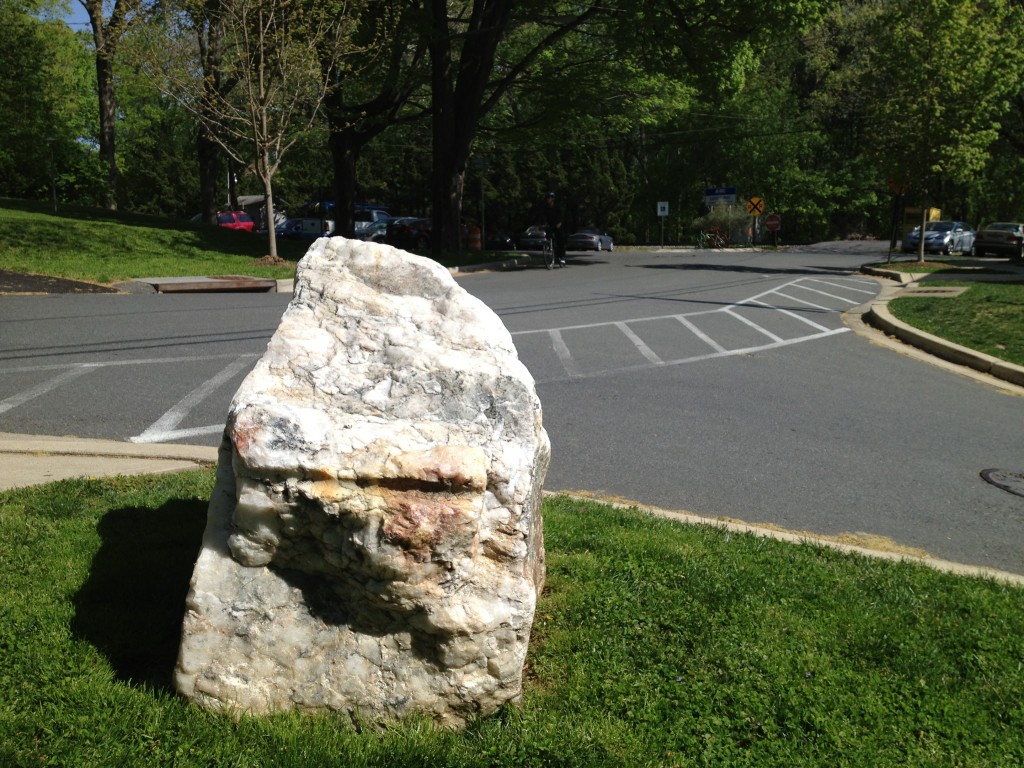
By Dan Reed of Just Up The Pike (as seen in Friends of White Flint)
With recent news of the Metro board of directors voting to approve changing the name of the White Flint Metro Station to North Bethesda, we wanted to share Dan Reed’s 2013 article highlighting how White Flint got its name.
Some call it White Flint, while others call it North Bethesda. One hundred years ago, they called it Windham. The White Flint Partnership, a coalition of area landowners seeking to transform Rockville Pike from a suburban strip into an urban downtown, are working on a branding scheme for the area. However, developers and residents alike disagree on whether to call it White Flint, North Bethesda, or something else. So where did these names come from, anyway?
In the early 20th century, Rockville Pike was a rural highwayand the area between today’s Rockville Town Center and Bethesda was rolling countryside, dotted with small villages. After Rockville, the biggest nearby towns were Kensington and Garrett Park. Annual maps from the United States Geological Surveyshow three tiny settlements in what’s now the White Flint Sector Plan area, each containing just a few houses. There was Montrose, located near the intersection of Montrose Road and Old Georgetown Road; Randolph, on Randolph Road near what today is Loehmann’s Plaza Shopping Center; and Windham, near the current intersection of Parklawn Drive and Boiling Brook Parkway.
Some of these place names persisted for decades, appearing on USGS maps as late as the 1970’s. However, others were more short-lived. Autrey Park, located near Rockville Pike and Edmonston Road, was wiped away after Rockville annexed it. Beane, a village at Old Georgetown Road and Grosvenor Lane, was renamed Mount Zion Church after its main landmark, before disappearing altogether after World War II. Windham’s last appearance on the USGS map was in 1923.
Seven years later, the White Flint Country Club opened on Rockville Pike near Nicholson Lane. That’s the first known use of the name, according to Clare Lise Kelly, research and designation coordinator for historic preservation at the Montgomery County Planning Department. The name was a reference to the white quartz rocks which can be found throughout Montgomery County.
By the 1950’s, suburban development took off along Rockville Pike, and with it came new uses for “White Flint.” Homebuilders laying out new subdivisions around the mall made references to the country club, like White Flint Drive, which was built between 1957 and 1959. The adjacent White Flint Park, which once held many of its namesake rocks, opened in 1978. Meanwhile, family-owned developer Tower Companies bought the country club in the 1960’s, according to Arnold Kohn, a lawyer for the company. Tower partnered with Lerner Enterprises to build White Flint Mall, which opened in 1977.
North Bethesda came a little later. It’s named for Bethesda, which was named in 1871 after a church named for a Biblical healing pool in Jerusalem, which in turn got its name from the Aramaic word for “house of mercy.” However, the Postal Service only recognized North Bethesda as an official mailing address in the 1990’s, a distinction White Flint doesn’t have. Other than a few scattered around the White Flint Mall property, and one in front of the Garrett Park post office, you won’t see many white flint rocks in White Flint, but the name remains as it has for over 80 years. How long it’ll stick around is another story.
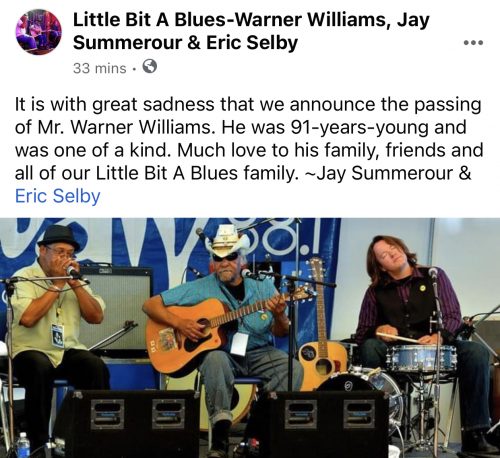
Williams was a recipient of a 2011 National Heritage Fellowship awarded by the National Endowment for the Arts, which is the United States government’s highest honor in the folk and traditional arts.
According to their bio, Little Bit of Blues were known for playing in the “Piedmont blues style, a regional variant of the blues that developed in North Carolina, South Carolina, Virginia, Maryland and West Virginia.”
Zinnia has announced on their social media accounts that they will be holding their grand opening on October 1. According to their website, “at Zinnia, patrons can get excited for a beer and wine garden, cafè, tavern, and fine dining restaurant,” and that guests can enjoy options from a beer truck and an outdoor bar.
The restaurant will also feature an all day cafè that is “expected to serve sandwiches, pastries, coffee, and more” and that guests should be on the lookout for some twists on some of Mrs. K’s favorites dishes.
Mrs. K’s Tollhouse, one of the most well-know restaurants in Silver Spring, closed in March 2020 after initial COVID-19 restrictions were enacted.
The restaurant was opened in 1930 by Harvey and Blanche Kreuzburg and served food to guests for 90 years. The restaurant was operated by members of the Kreuzberg family until ownership changed hands in 1996.
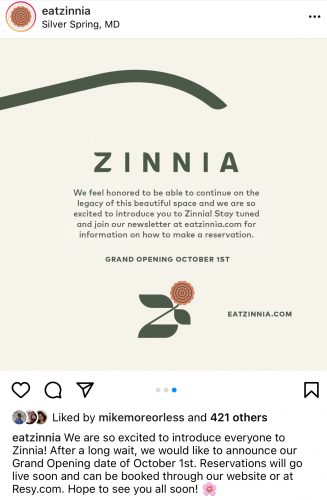
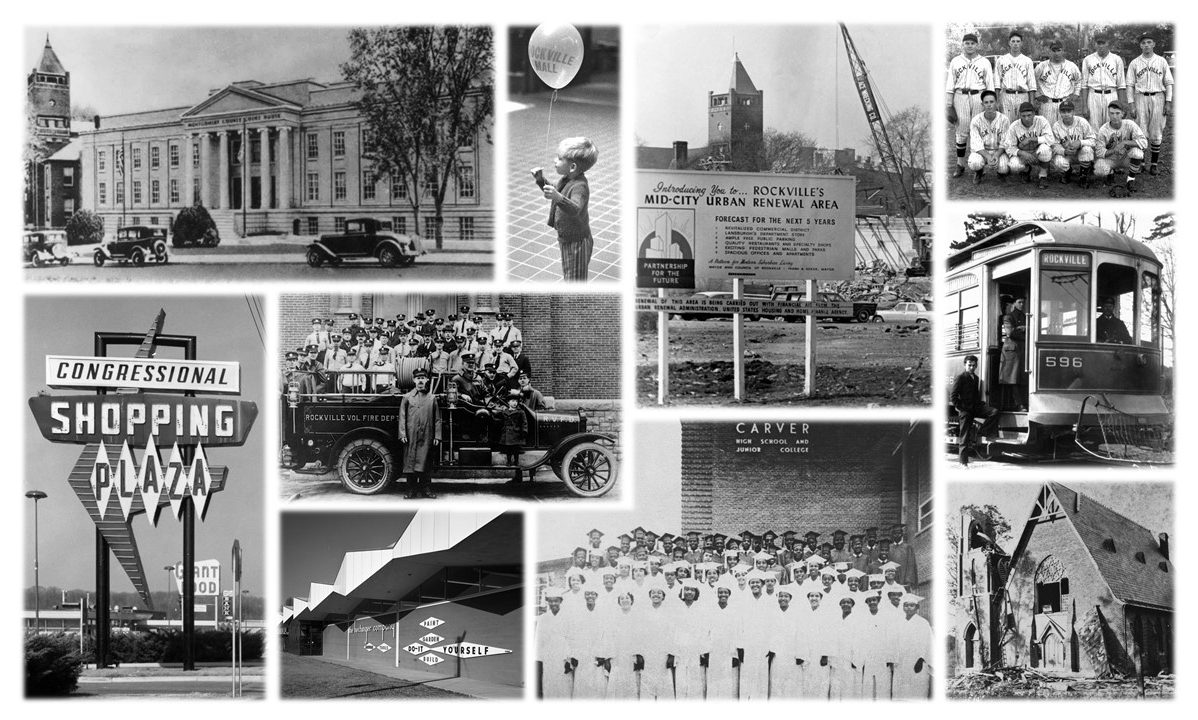
Below you’ll find a brief history of Rockville, courtesy of Peerless Rockville. Following the brief history, you’ll see a comprehensive timeline of noteworthy events that occurred in Rockville between 8000 BC and 2011 AD.
Brief History of Rockville:
More than 250 years ago, land grants to European settlers formed the nucleus for today’s Rockville, Maryland. By the 1750s local farmers were transporting tobacco to market in Georgetown down a road formerly used by Indians. The tiny settlement was designated as the seat of the new Montgomery County in 1776. Known as Rockville by 1803, the town’s life centered on Courthouse activity. More homes and shops were built, and the town of nearly 600 was incorporated in 1860.
Opening of rail service in 1873 transformed Rockville into a bustling summer resort and commuter town. Washingtonians built cottages and permanent residences, developers bought up farmland for subdivisions, and new businesses took advantage of the building boom in the period from 1880 to 1910.
During the first two decades of the 20th century, the pace of growth slowed considerably. Between 1900 and 1920, Rockville’s population grew by only 45 persons. However, amenities available in urban areas came to Rockville in this period—electricity, telephones, indoor bathrooms, a sewerage system, trolley cars, a town park, and street trees.
The years after World War II were phenomenal ones in Rockville. The population swelled from 2,047 in 1940 to 26,042 in 1960. The newcomers to Rockville included WWII veterans and their young families who purchased starter homes in new subdivisions, including Hungerford Towne, Twin-Brook, and Montrose. The decade of 1950-60 proved pivotal for the area, as much of the old disappeared and the new was being constructed.
Urban renewal was also launched during this period affecting Rockville’s downtown area. In the end, the project removed four streets, razed 111 structures, relocated 165 businesses and 52 families, and added 1,560 garage parking spaces. Constructed in this 47-acre area over the following 40 years were a shopping mall, high-rise apartment buildings, a Judicial Center and Executive Office Building, and a new Town Center.
Today Rockville has a population of over 67,000 people and continues to grow. The dynamics that created Rockville in the 18th and 19th centuries are still the same ones attracting newcomers: the presence of county government, a favorable location close to the nation’s capital, converging transportation routes that bring people here, and identity as an independent municipality.
Rockville Timeline (8,000 BC – 2011 AD):
8000 B.C. Archaic period of prehistory. After thousands of years of following big game herds, hunters settled into semi-nomadic lives in area which became Montgomery County.
1000 B.C. Native groups established year-round agricultural villages.
1200 A.D. Natives competed for river and forest resources, resulting in a succession of population displacements.
1717-35 Arthur Nelson surveyed and patented four tracts of land totaling 3,162 acres in the Rockville area.
1739 Chapel-of-ease built to accommodate westernmost settlers in Prince George’s (Anglican) Parish. Later became Christ Episcopal Church.
1740s “Rolling road” in use by tobacco planters and north-south travelers.
1748 Frederick County created, including Rockville area. Frederick Town selected County seat.
1755 British General Edward Braddock camped at Owen’s Ordinary enroute to defeat at Fort Duquesne at start of French & Indian War.
1760s Joseph Elgar built saw and grist mills on Rock Creek, later known as Muncaster Mill. William Dent and William Williams also constructed grist and saw mill, later Horner Mill.
1774 Patriots met at Charles Hungerford’s tavern to issue resolves supporting Boston protestors against British taxation.
1776 Frederick County divided, lower section named Montgomery County. Crossroads settlement at Hungerford’s tavern selected as new County seat.
1777 First Court session in Leonard Davis’ tavern. Village known as “Montgomery Court House”.
1784 William Williams divided part of “Exchange and New Exchange Enlarged” into 85 “lotts with streets fit, convenient and suitable for a town”, which he named Williamsburgh.
1787 Court House Square surveyed and laid out for Court House and jail.
1794 Post office established at Montgomery Court House.
1801 New County jail erected.
1801-3 Maryland Assembly passed Acts to re-survey lots and erect a town to be called “Rockville”. Work completed and Plan of Rockville, dated May 9, 1803, recorded in the Land Records of Montgomery County.
1805 Washington Turnpike Company chartered to build a road from George Town to Rockville.
1812 Rockville Academy opened with 30 students.
1813 Henry Shouse and Otho Williams opened saw and grist mill operation on Watts Branch. Later called Wootton’s Mill.
1814 President James Madison, General William Henry Winder, and troops came through Montgomery Court House after British burned Washington, D.C.
1817 Saint Mary’s Catholic Church constructed.
1822 Christ Episcopal Church moved into town.
1820s Town enlarged by first two additions to Rockville.
1833 Meteor shower dazzled Rockville residents.
1835 Samuel Clarke Veirs opened saw and grist mill on Rock Creek.
1838 Richard Johns and Catharine Bowie purchased tracts of land east of town and built farmhouse they called Glenview.
1840 New Montgomery County Court House constructed.
1846 Montgomery County Agricultural Society organized. Began tradition of County Fair in Rockville. Opened Fair Grounds on the Pike in 1848.
1860 Town of Rockville incorporated by Act of the Maryland General Assembly. Voters elected three commissioners and a bailiff.
1861 First public school opened for white students in Rockville.
1862-64 Rockville slaves emancipated.
1863 Confederate General J.E.B. Stuart captured prisoners, horses, and wagons in Rockville and headed north toward Pennsylvania.
1864 Confederate troops under General Jubal Early skirmished with Union troops and seized town records enroute to battle of Fort Stevens in Washington.
1865 Freedmen’s Bureau opened in Rockville to assist former slaves.
1869 Rockville Library Association and Masonic Lodge formed.
1873 Metropolitan Branch of Baltimore & Ohio Railroad opened through Montgomery County. Town of Rockville enlarged corporate limits and extended boardwalk to the new depot.
1876 First public school opened for colored students in Rockville.
1880 Rockville Cemetery Association incorporated as non-denominational community burial ground.
1884 First commercial bank in the County, Montgomery County National Bank, opened in Rockville.
1888 New town charter changed governing body from Town Commissioners to Mayor and Council of Rockville.
1889 First telephone installed at Fearon’s drug store on Montgomery Avenue.
1890 Mayor and Council issued first building permit to Thomas Dawson. New Rockville Academy building constructed.
1891 Montgomery County built new court house (Red Brick Courthouse). Lincoln Park subdivision recorded in Land Records.
1892 Montgomery County’s first high school (later called Rockville, then Richard Montgomery) opened on Monroe Street for grades 8 through 11.
1894 Coxey’s Army marched through Rockville on way to protest in Washington, D.C.
1897 Town constructed water pumping station and electric light plant. Electric service available but not all areas covered until circa 1920.
1899 Rockville Base Ball Club organized.
1900 Woman’s Club of Rockville founded. First trolley traveled the Rockville & Tennallytown Electric Railroad up the Pike to the Fair Grounds.
c. 1905 Rockville Pike taken over by State Roads Commission.
1910 Dr. Dexter Bullard opened the doors of Chestnut Lodge Sanitarium in the former Woodlawn Hotel.
1912 Chautauqua came to Rockville. Order of Galilean Fishermen organized in Rockville as sick and burial society for black residents. SECO, Rockville’s first movie theatre, opened for silent films and vaudeville shows.
1913 Typhoid epidemic in Rockville, resulting in town sewerage system.
1918-9 Influenza epidemic struck hundreds in Rockville.
1921 Rockville Volunteer Fire Department organized. Rockville Library moved into Dr. Stonestreet’s office.
1924 Croydon Park subdivision platted at Court House.
1925 Rockville Chamber of Commerce organized. Veirs and Muncaster mills, powered by water, closed. Hickerson Brothers set up steam-powered mill at railroad tracks.
1926 Rockville free delivery postal service began. Dr. and Mrs. James A. Lyon enlarged and renovated Glenview mansion. Welsh Field opened for athletic events, near Jefferson Street.
1927 First high school for Montgomery County black students built on North Washington Street. First traffic signal, a “stop and go” light installed at corner of Washington Street and Montgomery Avenue.
1928 Congressional Airport and School of Aeronautics opened on the Rockville Pike.
1931 Montgomery County opened new Court House and jail in Town Center. Author F. Scott Fitzgerald attended father’s funeral at Saint Mary’s Church.
1932 Mayor and Council adopted first Zoning Ordinance.
1935 Montgomery Hotel on Commerce Lane razed and replaced by Milo Theater. School bus-train accident resulted in closing of Baltimore Road track crossing and in construction of bridge over Veirs Mill Road.
1936 William B. Gibbs, principal of Rockville Colored Elementary School, filed suit for equal pay.
1939 Rockville’s first permanent post office dedicated, at corner of Washington Street and Montgomery Avenue. Cabin John creek sewage disposal plant built.
1940 F. Scott Fitzgerald buried in Rockville Cemetery. First sections of Rockcrest and Roxboro developed.
1944 Memorial Day parade tradition revived in Rockville.
1945 V-J Day celebrated in Court House Square with parade and speeches.
1946 Parking meters installed in business district.
1947 First large apartment complex built in Rockville. Rockville Little Theatre organized. Rockville Citizens Association formed.
1948 Position of City Manager created. First summer recreation program.
1949 Mass annexation into Rockville of 2,210 acres.
1950 Rockville Kiwanis Club organized.
1951 Rockville By-Pass (Hungerford Drive) opened. George Washington Carver High School and Junior College opened. Rockville created Civil Defense program.
1951-7 Hill & Kimmel purchased properties on Washington Street and Middle Lane to develop three strip shopping centers.
1953 New County Office Building replaced Welsh athletic field. Large land area along Pike near Halpine annexed into City of Rockville.
1954 National Municipal League and Look Magazine honored Rockville with All-America City Award. Rockville Boys Baseball Association organized.
1955 General Assembly granted Home Rule to Maryland municipalities, giving Rockville annexation and other powers. Rockville Jaycees organized. Rockville Chamber of Commerce chartered. WINX operated radio station on Baltimore Road.
1956 Mayor & Council appointed first Planning Commission. Clinton A.M.E. Zion Church relocated in Lincoln Park. Rockville Civitan Club organized.
1957 Rockville joined Montgomery County library system. City purchased Lyon estate (Glenview) and 28 acres for cultural, recreational, and social uses. Rockville Pike widened to four lanes. U.S. Route 240 (now I-270) completed through Rockville, connecting Washington, D.C. with Frederick County. Pinneberg, Germany established Sister City relationship with Rockville. Rockville Art League and Rockville Concert Band founded.
1958 Unitarian Church of Rockville founded as a fellowship. New sewer system installed for Cabin John creek drainage area. Rockville installed new water system, supplied by Potomac River.
1959 First public housing project in Montgomery County, 65 units known as Lincoln Terrace, built in Rockville. Congressional Plaza shopping center opened on site of former Congressional Airport. Elwood Smith teen center opened. John Gray, director of Public Works, developed formula for Smooth-Seal method of asphalting.
1960 Rockville celebrated Centennial of incorporation. First Master Plan adopted. Agreement between Rockville and Montgomery County established Maximum Expansion Limits. Auditorium built at Rockville Civic Center Park. First Antique and Classic Car Show. Modern Zoning Ordinance adopted, with first Comprehensive Map Amendment. Sit-in demonstrations at HiBoy Restaurant.
1960s Richard Montgomery High School dominated high school football in Maryland.
1961 Montgomery County Detention Center opened on former Poor Farm property. Rockville Industrial Park opened as city’s first for research and development. City of Rockville initiated Urban Renewal project in downtown Rockville. All-America Award #2. Julius West Junior High School opened.
1962 New City Hall built on site of former Peter home. Rockville enacted Public Accommodations law.
1963 First comprehensive residential developments –Meadow Hall and Woodley Gardens. “Lilith” filmed in Rockville.
1964 City of Rockville split Parks & Recreation Department from Public Works. City continued to add park land as new subdivisions opened. Capital Beltway completed. First Citizens’ Forum.
1965 Demolition in central business district begun. Montgomery Junior College opened Rockville campus. Solid waste landfill and incinerator opened on Southlawn Lane. City purchased Beall-Dawson house. Rockville Football League and Rockville Arts Council formed. Rockville surpassed Cumberland and Hagerstown to become second largest city in Maryland. Began municipal refuse collection. First synagogue, Beth-Tikva, built on Baltimore Road.
1966 New Saint Mary’s Church constructed. Near-demise of old Saint Mary’s Chapel led to historic district ordinance for Rockville. First Spring Arts Festival. First computer introduced at City Hall (NCR 500).
1967 Fair Housing law passed. Community Ministries of Rockville formed to coordinate welfare services of churches and community. First resident moved into New Mark Commons.
1968 Municipal Swim Center opened.
1969 Wootton High School opened.
1970 Rockville High School opened. “Street 70″ created. Lincoln Park Community Center built. Senior Citizen Commission and Economic Development Council established. Rockville purchased RedGate farm.
1971 New Rockville Library opened on Maryland Avenue.
1972 Rockville Mall dedicated. Rockville Community Chorus formed. At a telephone booth in Rockville, James McCord received orders to carry out plans of Committee to Reelect the President to bug Watergate office.
1974 Mayor and Council designated first three historic districts in Montgomery County. Peerless Rockville, Rockville Musical Theatre, and Rockville Civic Ballet chartered. RedGate Golf Course opened. Maryland Court of Appeals retains entire city in new 17th Legislative District.
1975 Remains of F. Scott and Zelda Fitzgerald moved from Rockville Cemetery to Saint Mary’s Cemetery. Twinbrook Library opened on Meadow Hall Road. Zoning Ordinance recodified.
1976 All-America Award #3.
1978 Art in Public Places created. Cultural Arts Commission and Victorian Lyric Opera Company formed.
1978 All-America City Award #4. Rockville created Humanities Commission, one of the first jurisdictions in the nation to do so.
1981 County began operating Ride-On buses in Rockville.
1982 Rockville Senior Center opened. Montgomery County Judicial Center and Executive Office Building constructed. First neighborhood plans–Croydon Park and Twinbrook–adopted.
1984 Metro Red Line extended to Rockville and Shady Grove.
1985 Rockville Cable TV began operations.
1988 National Chamber Orchestra took up residency at F. Scott Fitzgerald Theatre.
1989 First Hometown Holidays sponsored by Recreation Department. Rockville Arts Place organized. Rockville farmers’ market opened.
1991 Circumferential highway around Rockville completed, comprised of Gude Drive, Wootton Parkway, and First Street.
1993 Rockville Mall demolished. Thomas Farm annexed into City of Rockville. New comprehensive Master Plan adopted.
1995 King Farm annexed into City of Rockville. Marlo Furniture store, first of the “big box” retail stores, opened on the Rockville Pike. First female mayor elected (Rose G. Krasnow)
1996 Restoration of grand courtroom in the Red Brick Courthouse completed.
1997 “Imagine Rockville” visioning process. Courthouse Square Park created, with “Spirit of Rockville” fountain. Street grid returned to Town Center.
1998 Regal Cinemas opened in Town Center.
2000 City of Rockville celebrated the Millennium Year with events, contests, and commissioning of history. Rockville slips to fifth largest city in Maryland.
2002 Rockville’s population exceeded 50,000.
2007 Public and private partners dedicated new Town Center development.
2008 Mayor and Council designated the first recent past building, the 1971 Rockville Library, a historic district, (demolished in 2009).
2010 Celebration of Sesquicentennial of Incorporation.
2011 Groundbreaking of Choice Hotels International corporate headquarters in Town Center.
Featured photo courtesy of Peerless Rockville’s book, Images of America: Rockville (available for purchase in the link).
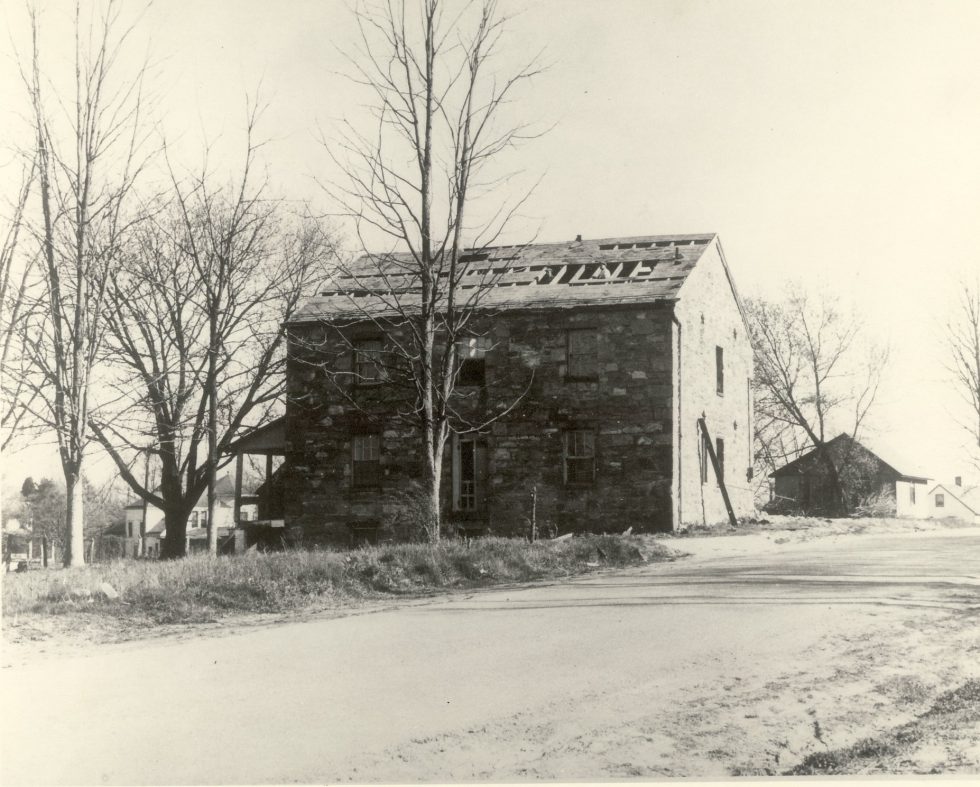
Statement from Montgomery County Commission on Remembrance and Reconciliation Commemorating and Remembering the Lynchings of Mr. John Diggs-Dorsey and Mr. Sidney Randolph
Feature photo of the Montgomery County Jail building in Rockville (1935), where John Diggs-Dorsey was dragged from to his lynching on July 27, 1880 courtesy of Montgomery History.
For Immediate Release: Friday, July 16, 2021
The month of July begins with our national commemoration of the signing of the Declaration of Independence with its powerful refrain “Life, Liberty and the Pursuit of Happiness.” We hold those words before us as promises of a hope for all people.
At the same time, we, the Montgomery County Commission on Remembrance and Reconciliation, pause to remember the lives of two people who were denied the rights of “Life, Liberty and the Pursuit of Happiness,” and were killed by lynch mobs over accusations that never saw a courtroom. We honor the memory of Mr. John Diggs-Dorsey and Mr. Sidney Randolph, both of whom were victims of acts of racial terror and subjugation in Montgomery County.
In a cruel twist of archival truth, we do not know the specific dates of their birth—the date that we normally lift up to acknowledge life – so we must respectfully acknowledge the known date of the tragic events that ended their lives. In July 1880, Mr. John Diggs-Dorsey was lynched. In July 1896, Mr. Sidney Randolph was lynched. Both lynchings took place in Montgomery County, Maryland.
Mr. John Dorsey, also known as John Diggs, a Black man in his early twenties, was living and working in Darnestown in 1880 as servant to a middle-aged couple, James and Linnie Tschiffely. On the morning of July 25, while James was out of town, Linnie Tschiffely appeared at a neighbor’s house badly beaten, and accused John Diggs-Dorsey of raping her and physically assaulting her the night before. After a two-day manhunt that spread across the state and into Washington, D.C., Diggs-Dorsey was apprehended on July 26 while walking along a public road and brought to the County jail in Rockville. In custody, Mr. Diggs-Dorsey was afforded neither protection from the lynch mob nor his right to a trial, as several hours later, in the early morning hours of July 27, a lynch mob of white people forced open the jail. Mr. Diggs-Dorsey was illegally removed from his cell, marched in leg-irons to a place one mile outside town on Route 28 and hanged from the limb of a tree until dead. The local jury of inquest, as well as the grand jury convened four months later, both returned a verdict of death by “violence committed by parties unknown.”
Mr. Sidney Randolph, a native of Georgia was lynched in Rockville, Maryland on July 4, 1896 by an officially unidentified group of white men from Montgomery County. He was in his mid-twenties. The full story of Sidney Randolph’s murder was connected to the mystery involving an axe-wielding attack by an unknown person on the Buxton family of Gaithersburg in May of that same year, and the subsequent death of the youngest child, Sadie Buxton. Though professional detectives were brought in from both Washington and Baltimore to investigate the case, local residents of Gaithersburg took it upon themselves to find and/or create circumstantial evidence implicating Sidney Randolph, a newcomer to the area who had no motive and who consistently maintained his innocence. Randolph survived repeated interrogations while imprisoned from May 25 until July 4. In custody, Mr. Randolph was afforded neither protection from the lynch mob nor his right to a trial, as a masked mob of white men dragged him from his cell in the Rockville jail, brutally beat him, and hanged him from a tree just outside of town along Route 355. His murderers were never identified nor brought to justice for this crime.
We know both that “those who cannot remember the past are condemned to repeat it” and that “there can be no reconciliation without truth.” This demands that this July we acknowledge these tragic events, remember these slain men, their families and their communities.
We ask all citizens of Montgomery County to pause during the month of July and remember our nation’s founding but still incomplete commitment to “Life, Liberty, and the Pursuit of Happiness” for all people. In memory of Mr. Diggs-Dorsey and Mr. Randolph, we dedicate ourselves anew to the work of justice and reconciliation.
There are three known lynchings that occurred in Montgomery County, Maryland. Mr. George Peck was lynched on Jan. 10, 1880 in Poolesville, Maryland. The Montgomery County Commission for Remembrance and Reconciliation will provide a full acknowledgement for Mr. Peck in January.
About the Montgomery County Remembrance and Reconciliation Commission:
The Montgomery County Remembrance and Reconciliation Commission was formed on January 29, 2019, through a resolution by Councilmembers Hans Riemer, Will Jawando and Craig Rice. The commission was established to support the goal of bringing the County together to promote a better understanding of our history. The Montgomery County Office of Human Rights provides staff support.
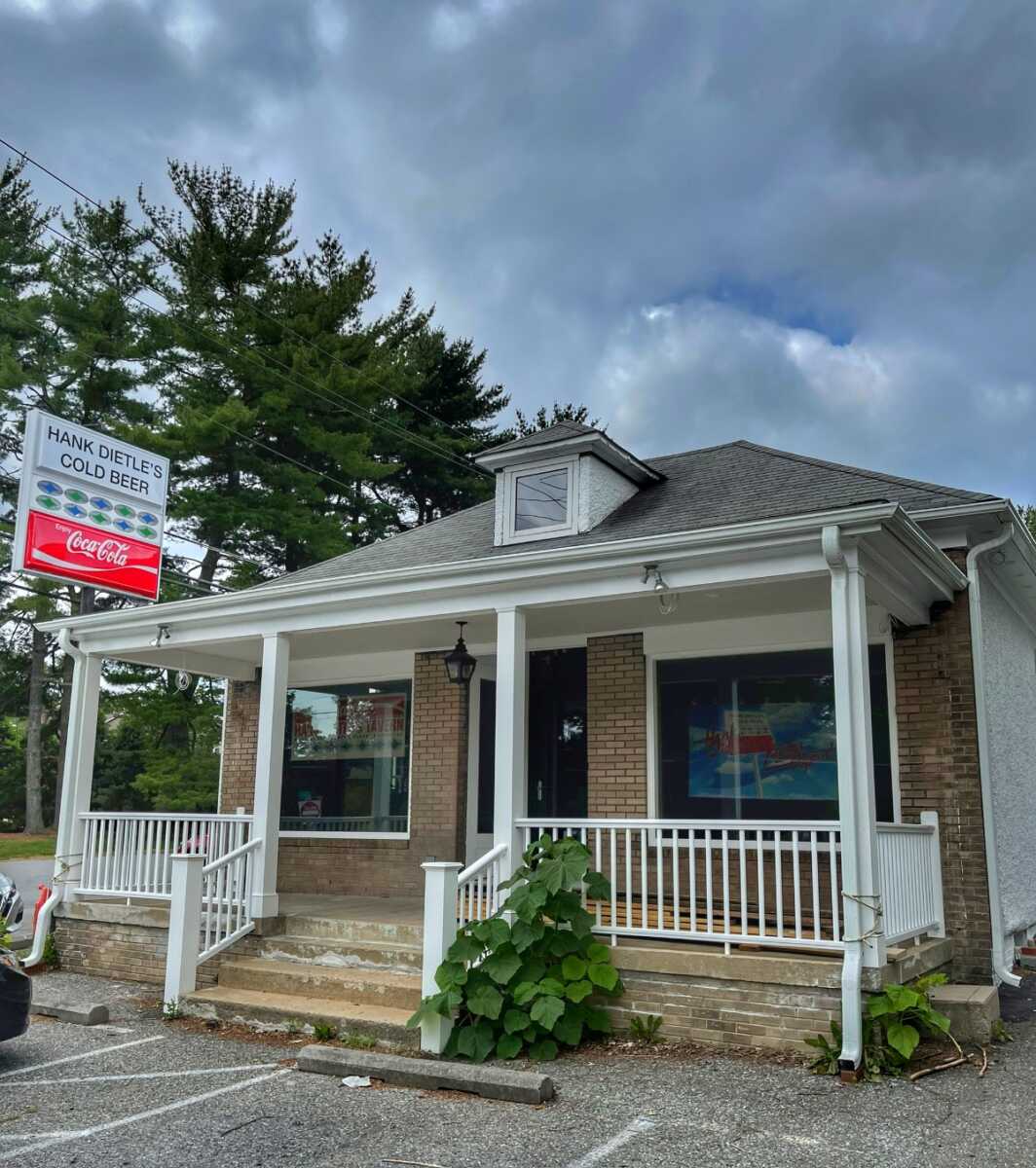
Hank Dietle’s Has Officially Reopened
Back in February of 2018, Hank Dietle’s Tavern suffered damage after a fire, forcing it to close. Since then, a dedicated crew had been working hard to rebuild the tavern.
Hank Dietle’s had MoCo’s very first liquor license– after the fire, there was a lot of speculation about whether they would be allowed to have that original license number again. Luckily, they learned earlier this year that they will be able to keep that piece of MoCo history with liquor license 001 being restored for MoCo’s first bar.
Hank Dietle’s Tavern in Rockville was built in 1916 and first served as a general store until named “Offutt’s” until Hank Dietle took over in the 1950s. Before the fire, you’d also find a pool table, arcade games, and vintage bar furniture.
As their sign outside says, they were known for serving cold beer, but the only food they served were chips and peanuts inside (though there was usually a food truck outside).
If you’re curious about who has liquor license #002, check out a previous post of ours where we walk you through this unique spot.
Montgomery Parks Recognized with Historic Preservation Award for Rehabilitation of Seneca Store and Upton Darby House
Per Montgomery Parks:
WHEATON, MD – Montgomery Parks has received the 2020 County Executive’s Award for Historic Preservation from Montgomery Preservation, Inc. The award recognizes the department’s efforts in the rehabilitation of the Seneca Store and the neighboring Upton Darby House located in Poolesville, as well as the associated archaeological investigations of the sites and development of interpretive signage.
For 33 years, Montgomery Preservation, Inc. has honored individuals and groups for their contributions in preserving, restoring, and interpreting Montgomery County’s architectural heritage and historic landscapes for future generations. Montgomery Parks was one of nine recipients to be honored this year. In lieu of an in-person awards ceremony, Montgomery Preservation produced a video highlighting this year’s honorees.
“This award recognizes the superb preservation work that Montgomery Parks continues to conduct at its historic properties. Undertaking and completing a comprehensive project such as the rehabilitation of the Seneca Store and Upton Darby House enriches and inspires us all,” said Sandra Heiler, Montgomery Preservation Board Member.
The rehabilitation of the historic Seneca Store i included the general store’s original tongue and grooved ceiling, wood floors, and shelving, as well as structural upgrades. New mechanical, electrical and plumbing systems were installed and a new one-story, 300-square-foot rear kitchen and staff restroom was added. Additional accessibility improvements were made and the building was brought up to current code requirements so that it could once again be leased to a commercial tenant.
The rehabilitation of the Upton Darby House included reconstruction of collapsing sections of rubble stone foundation and replacing the failing roof system. Interior improvements included renovating the kitchen and bathrooms and refinishing the floors.
In conjunction with the rehabilitation work, archaeological investigations were conducted and led to significant discoveries, including an 18th-century stone mill wheel pit measuring approximately 16′ x 16′ x 4 1/2′ Although remnants of other 18th-century mills have been uncovered in Montgomery County, few have such intact mill wheel pits. More than two thousand artifacts were found in the excavated area.
Over the duration of these projects, interpretive panels, posters, and banners were created to educate the public about the historic aspects of the store and its surroundings, as well as about archaeology in general.
“We are proud to receive this recognition from Montgomery Preservation. This project is indicative of our continued commitment to cultural resources stewardship,” said Mike Riley, Director, Montgomery Parks.
History of the Seneca Store and Upton Darby House
The Seneca Store, a gable-front, two-and-a-half story general store first opened its doors in 1901. It served the community continuously for 109 years before closing in 2010. It was operated by the Allnutt family until 1965, when employee Raymond E. Poole took over the business. The Poole family continued to operate the store specializing in goods and services for local equestrian, hunting and farming communities, and is now managed for Southern States (leasee) by Poole family members.
The Upton Darby House was constructed in 1855 by John Darby and later named for his son, Upton. The Darbys operated adjacent mills which had been established in the late 18th century. The Allnutt family purchased the house in 1900 just before building the Seneca Store. Both properties remained in the Allnutt family until they were purchased in 1972 by The Maryland-National Capital Park and Planning Commission.
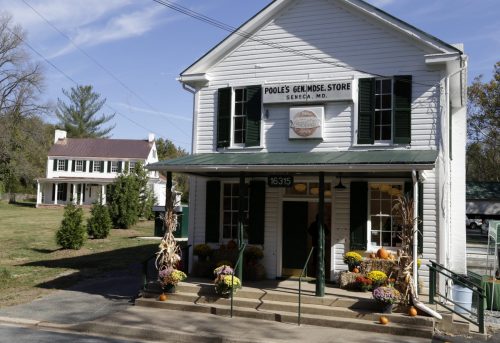
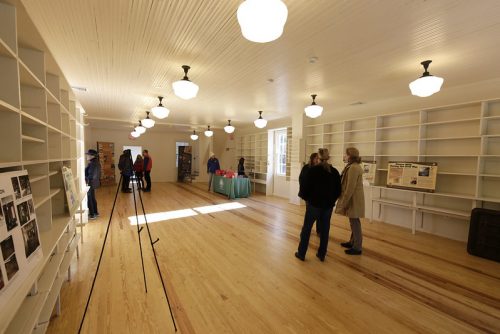
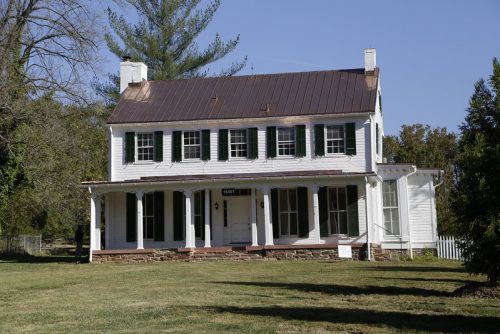
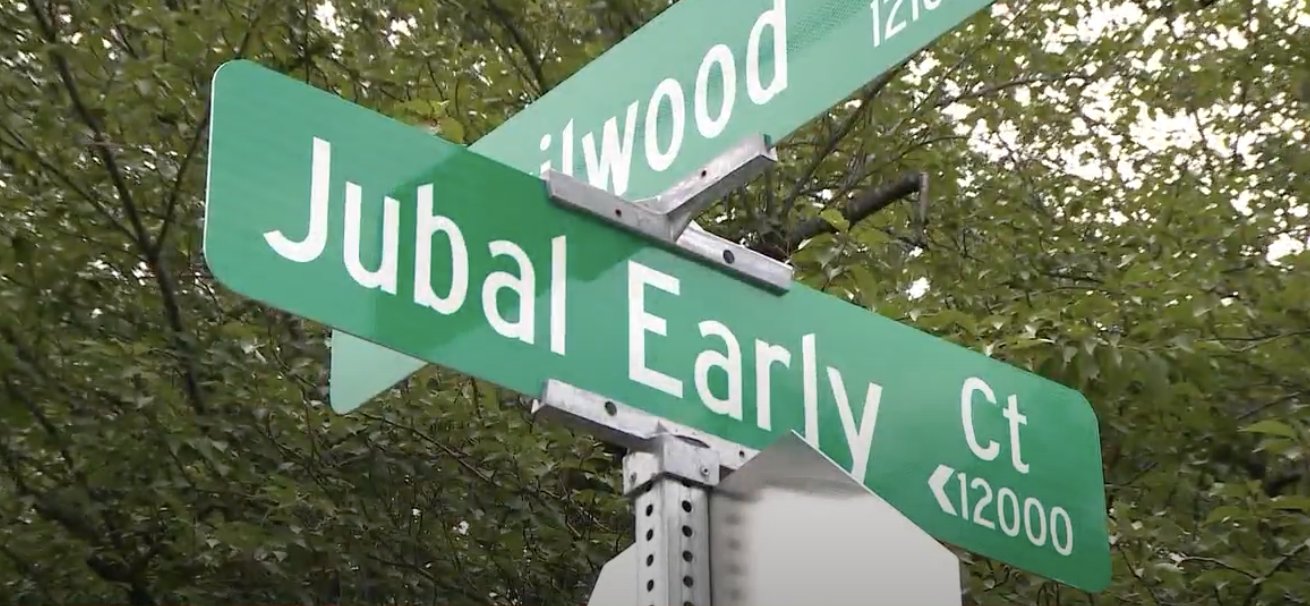
Three Potomac Streets Named After Confederate Officers to be Renamed
Earlier today Councilmember Andrew Friedson announced that the Montgomery County Planning Department will rename three Potomac streets named for Confederate Officers.
Per Montgomery Planning: “The Montgomery County Planning Department, part of The Maryland-National Capital Park and Planning Commission (M-NCPPC), has announced it will rename three streets identified as having full name matches with Confederate soldiers with those that honor local African American historical figures Geneva Mason and William Dove. The streets currently known as J.E.B. Stuart Road and J.E.B. Stuart Court will be renamed Geneva Mason Road and Geneva Mason Court, respectively. The street currently known as Jubal Early Court will be renamed William Dove Court.”
This comes a year after we called for the renaming of these streets – JEB Stuart Road, JEB Stuart Court, and Jubal Early Court – recognizing that public street names must reflect our community and values. And there is no place to honor Confederate soldiers in our community. pic.twitter.com/Jj9nQCcecH
— Councilmember Andrew Friedson (@Andrew_Friedson) June 18, 2021
Per Montgomery Planning:
The streets being renamed were identified as having full name matches with Confederate soldiers; J.E.B. Stuart Road and J.E.B. Stuart Court will be renamed Geneva Mason Road and Geneva Mason Court, respectively; Jubal Early Court will be renamed William Dove Court.
WHEATON, MD –The Montgomery County Planning Department, part of The Maryland-National Capital Park and Planning Commission (M-NCPPC), has announced it will rename three streets identified as having full name matches with Confederate soldiers with those that honor local African American historical figures Geneva Mason and William Dove. The streets currently known as J.E.B. Stuart Road and J.E.B. Stuart Court will be renamed Geneva Mason Road and Geneva Mason Court, respectively. The street currently known as Jubal Early Court will be renamed William Dove Court.
These three streets are the first to be renamed as a result of the M-NCPPC’s Street and Parks Facilities Renaming Review project, a joint effort of the Montgomery County Planning Department and Montgomery County Parks Department, both part of M-NCPPC. The project began in June 2020 after the Montgomery County Council sent a letter to the Planning Board and the County Executive requesting “a comprehensive review of all County owned and maintained street names and public facilities to determine all those named for Confederate soldiers or those who otherwise do not reflect Montgomery County values.” After the Montgomery County Planning Board unanimously approved a resolution to begin the renaming process in January 2021, Montgomery Planning worked with the community to garner ideas and feedback on new street names. Out of all the individual names proposed for the new street names, Geneva Mason’s name received overwhelming support from the community.
About the new street names
Geneva Mason (1899-1980) was a prominent community leader in the Scotland community, centered near Seven Locks Road in Potomac, in Montgomery County; she was instrumental in the rebuilding of the Scotland community and its fight against urban renewal efforts in the 1960s. In addition to Ms. Mason, the Scotland community suggested renaming a street in honor of one of their elders: William Dove. Dove, an African American man born in slavery, was one of the founding members of the Scotland community. He purchased some of the first parcels in Scotland and is an ancestor of many Dove and related family members who live in Scotland today.
Under Maryland law, the Montgomery County Planning Board has the authority for naming or renaming most county streets. That authority is delegated to the Montgomery County Planning Department Director. To ensure that these new names are not duplicative or could be easily confused with an existing street name, Planning staff have worked closely with Emergency Services and Fire Department staff from Montgomery County and the City of Rockville. They also confirmed that the new names meet the standards of the existing M-NCPPC Addressing and Street Naming Manual and Street Renaming Policy.
“After listening to the community and giving careful consideration, I have made the determination to rename the three streets, which are currently named for Confederate officers, after consequential Montgomery County residents,” said Planning Director Gwen Wright. “These street names will honor the legacies of these local African American historical figures going forward and take a small step towards righting the wrongs of our past.”
Streets renaming process:
- The M-NCPPC Street and Parks Facilities Renaming project began in June 2020 after the Montgomery County Council sent a letter to the Planning Board and the County Executive requesting “a comprehensive review of all County owned and maintained street names and public facilities to determine all those named for Confederate soldiers or those who otherwise do not reflect Montgomery County values.”
- During summer 2020, a team of Montgomery Parks and Planning historians conducted historical research to identify nationally known Confederates as well as local Confederates, Confederate sympathizers and slaveholders in Montgomery County, then identified streets and park facilities that had name matches. More details on this research can be found here.
- Montgomery Planning and Parks staff briefed the Planning Board on the Street and Park Facilities renaming project research findings on October 1, 2020.
- Montgomery Planning and Parks staff briefed County Council’s Planning, Housing and Economic Development Committee on December 7, 2020 on the renaming initiative and its findings.
- Montgomery Planning and Parks staff briefed the full Montgomery County Council on January 12, 2021.
- The Montgomery County Planning Board unanimously approved a resolution on Thursday, January 14, 2021 to begin a process to rename three streets identified as having full name matches with Confederate soldiers. The streets, currently known as Jubal Early Court, J.E.B. Stuart Road, and J.E.B Stuart Court, are the first to be renamed as a result of the M-NCPPC’s Street and Parks Facilities Renaming Review project.
- Montgomery Planning staff hosted a virtual community meeting with property owners and residents on the three streets on February 22, 2021 to brief them on the renaming project and solicit feedback on potential name options.
- Montgomery Planning notified the owners and residents of the close to 70 impacted property addresses of their new street names in a letter sent on June 17, 2021. The letter also included information on next steps for Montgomery Planning to implement the street name changes as well as steps for property owners to take.
Remembering Shakey’s Pizza Parlor
Shakey’s Pizza Parlor had multiple locations in MoCo back in the 70’s and 80’s, including in Gaithersburg on Beauru Dr. and in Rockville on 355.
Shakey’s was founded in 1954 by Sherwood “Shakey” Johnson and Ed Plummer in Sacramento, CA. According to wikipedia, Johnson’s nickname resulted from nerve damage following a bout of malaria during World War II. As the first franchise pizza chain in the United States, the company expanded to as many as 500 stores worldwide at the height of it’s popularity.

Photo courtesy of Steve Michaels.
Shakey’s was popular with both children and adults. Parents could drink pitchers of beer while the kids played Pac-Man or watched the chef’s prepare the pizza through their open kitchen.
After multiple ownership changes in the 80’s, most of the U.S. locations were closed by the 1990’s. Currently you can only find Shakey’s in California (47 locations) and Washington (2 locations).
Here’s a look at some current day menu items from the chain:




We did a Facebook post about Shakey’s back in 2015, here were some of the best replies:


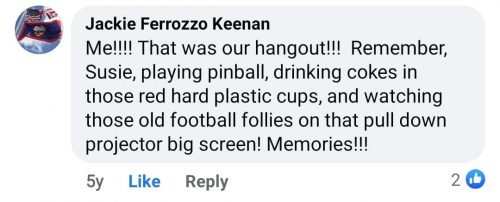
Who’s up for a road trip to the West Coast?

Rockville to Hold Its Inaugural Juneteenth Celebration
The City of Rockville will observe Juneteenth, Saturday, June 19, as a city holiday for the first time this year with a panel discussion and community service activities.
The panel discussion will focus on racial equity, social justice and economic development as a means toward achieving equity and justice. Panelists will include residents, members of Rockville’s Mayor and Council, and city staff. The discussion will be prerecorded and available for viewing on June 19 on Rockville 11 (channel 11 on county cable), on the city’s YouTube channel and on the city’s website, where additional information about the discussion and holiday events will be posted as it becomes available.
The city will also coordinate with community groups to provide opportunities for residents to participate in community service activities.
The holiday commemorates June 19, 1865, when the Union army arrived in Texas bearing federal orders proclaiming the end of slavery.
In July 2020, the Mayor and Council approved a resolution making Rockville the first municipality in Maryland to recognize Juneteenth as a paid city holiday.
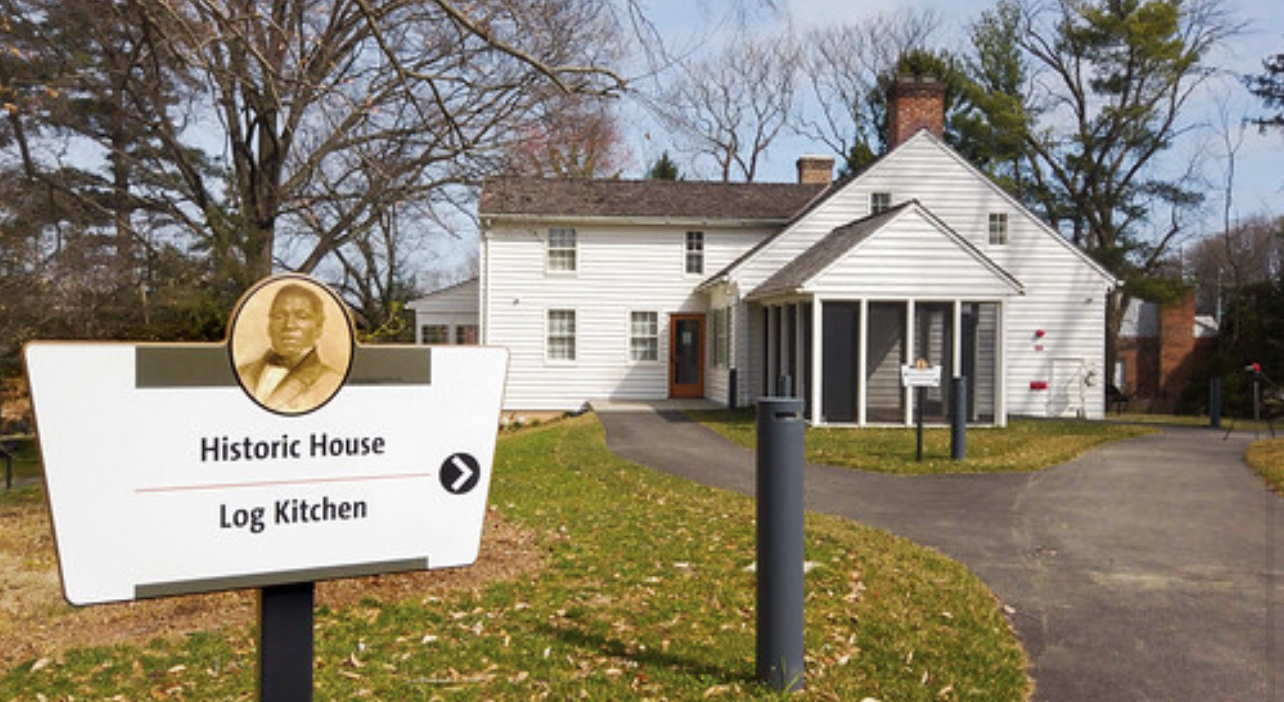
Josiah Henson Museum and Park Opens on April 23
Montgomery Parks has announced the opening of Josiah Henson Museum and Park on April 23, 2021. The museum and park are located at 11410 Old Georgetown Road in North Bethesda, on the site of the former plantation where Henson was enslaved from 1795 – 1830. The museum is open Friday through Sunday, 10 a.m. to 4 p.m. Tickets are required for admission and must be purchased online.
The Josiah Henson Museum and Park tells the inspirational life story of Reverend Josiah Henson, who was born into slavery yet defied the odds to become an influential author, abolitionist, minister, public speaker, and a world-renowned figure. One of Henson’s many accomplishments was his 1849 autobiography, The Life of Josiah Henson, Formerly a Slave, Now an Inhabitant of Canada, which inspired Harriet Beecher Stowe’s landmark anti-slavery novel, Uncle Tom’s Cabin.
“I’m proud that Maryland’s 8th District is home to the new Josiah Henson Museum and Park,” said Congressman Jamie Raskin. “This vivid retelling of the extraordinary life and legacy of Josiah Henson will help us bring to life African-American history in Montgomery County and across Maryland. I thank Montgomery Parks and Montgomery County for researching and uplifting the untold stories of our African-American community, and I look forward to visiting and promoting the museum.”
“Josiah Henson was a remarkable man, and I am thrilled that we can preserve and amplify his legacy through this new museum. The museum is a resource of not only local significance but national importance. It is the only archaeology-based museum in the country dedicated to telling the story of African American enslavement. I encourage everyone to plan a visit,” said Mike Riley, Director, Montgomery Parks.
The Josiah Henson Museum & Park includes:
- The Riley/Bolten House which dates to1800-1815 and its attached log kitchen which dates to 1850. These historic structures have been rehabilitated and now feature both traditional and multimediaexhibits, incorporating archaeological artifacts found onsite.
- A newly constructed 3,000 square-foot visitor center which includes an auditorium with an orientation film, gift shop, restrooms, and observation terrace.
- A 4-acre landscaped park with an accessible walking path featuring outdoor interpretive exhibits, and archaeological features.
Throughout the museum and park, Henson’s story is dramatically recounted through film, audio recordings, archaeological artifacts, graphics, and custom illustrations by artists. The experience transports visitors back in time and evokes moments of emotion and reflection. In addition to interpreting Reverend Henson’s life story, the museum also educates visitors about the history of enslavement in Montgomery County and the ongoing struggles for racial equity and justice.
“Our family is absolutely thrilled with the completion of the museum,” said Mia M. Lewis, a descendent of Josiah Henson. “My hope is that people will come to understand who the Rev. Josiah Henson truly was, a man of tremendous strength, intelligence, loyalty, and of great faith.”
The Josiah Henson Museum and Park is open Friday through Sunday, 10:00 am – 4:00 pm. Tickets are required and can be purchased in advance online. In accordance with COVID-19 health and safety guidelines, admission is limited to your reserved timeslot and masks are required. Visitor parking is available at Wall Local Park, 5900 Executive Blvd., N. Bethesda. There are a limited number of accessible parking spots on-site for permit holders at 11410 Old Georgetown Road.
Josiah Henson’s Life and Legacy
Josiah Henson was born into slavery in Charles County, Maryland on June 15, 1789. After being sold separately from his mother and siblings at the auction block, he was eventually traded to Isaac Riley and worked alongside his mother on the Riley plantation from 1795 – 1830. The plantation was located along what is now Old Georgetown Road in North Bethesda. Through hard work and acumen, Henson rose to become the plantation superintendent. He also found Christianity after attending a sermon given by an itinerant preacher at the nearby Newport Mill.
Henson became an ordained Methodist minister and after suffering the violence and cruelty of four decades of chattel slavery, escaped to Canada on foot in 1830 with his wife and four children. There he helped established Dawn Settlement, a community inhabited by those formerly enslaved in the United States, continued his work in the Methodist ministry, and became an international speaker and abolitionist. Henson continued the fight for freedom, leading 118 people from enslavement in the United States to freedom in Canada as a conductor on the Underground Railroad.
In 1849, Henson published his autobiography, The Life of Josiah Henson, Formerly a Slave, Now an Inhabitant of Canada, which vividly depicted his experience of enslaved life in Maryland and Kentucky. The book inspired Harriet Beecher Stowe’s groundbreaking fictional novel, Uncle Tom’s Cabin, which broke all sales records of the time and sold more than half a million copies by 1857. Uncle Tom’s Cabininspired the abolitionist movement in the mid-nineteenth century, and many believe the novel helped propel the country into civil war. Henson’s later work as a renowned speaker and author garnered him invitations both to the White House and Windsor Castle in London, England.
A Project 15 Years in the Making
In January 2006, Montgomery Parks acquired the property located at 11420 Old Georgetown Road from private ownership. The property included the Riley/Bolten House which dates to 1800-1815, and its attached log kitchen which dates to 1850. Modifications were made to the tidewater plantation house in the 1930s by White House architect Lorenzo Winslow in the Colonial Revival Style. Four adjoining parcels of land were acquired in subsequent years to create a nearly-4-acre park. The park first opened to the public in 2006. Parks staff conducted archaeological excavations for the past 10 years that have yielded over 50,000 artifacts. In addition to excavations, Parks staff hosted school programs based on archaeology, and led historic interpretive public programs about Henson’s life and the African American experience. In 2011, Parks staff wrote and submitted the nomination to list the Riley/Bolten House onthe National Register of Historic Places for its historic significance. The historic house has been listed on the Montgomery County Master Plan for Historic Preservation since 1979.
In June 2013, The Montgomery County Planning Board approved the Josiah Henson Park Facility Plan. The facility plan called for rehabilitating the Riley/Bolten House and converting it into a public museum, as well as building a new 3,000 square-foot visitor center and making the site more accessible to visitors.Funding for the project included: Montgomery County funds, State of Maryland funds, Federal funds, and private donations. The total project cost was $8.8 million dollars. Construction began in 2018 and was completed in February 2021.
The Josiah Henson Museum and Park is part of the National Park Service National Underground Railroad Network to Freedom program.

